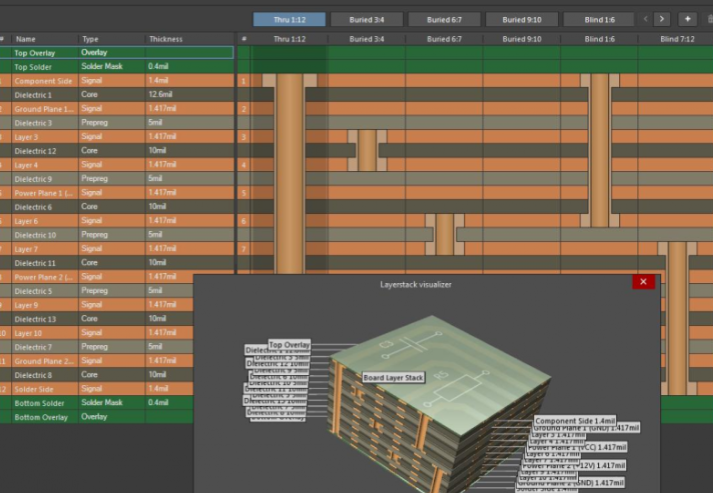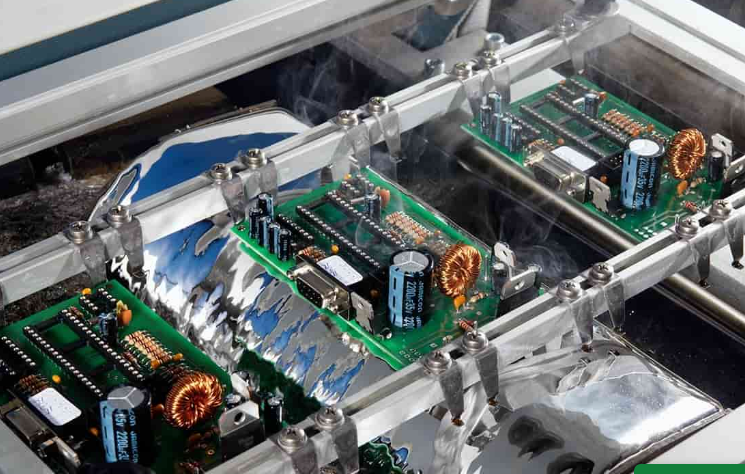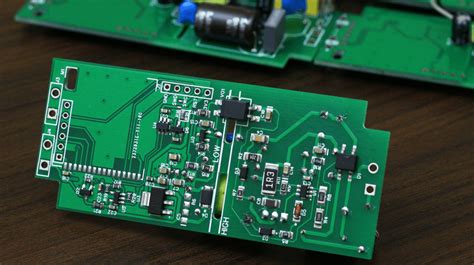China pcb assembly
Innovations In China PCB Assembly: A Look At The Latest Technologies
China has long been a global leader in the electronics manufacturing industry, and its prowess in printed circuit board (PCB) assembly is no exception. As the demand for more sophisticated electronic devices continues to rise, the need for advanced PCB assembly technologies has become increasingly critical. In recent years, China has made significant strides in innovating PCB assembly processes, leveraging cutting-edge technologies to enhance efficiency, precision, and reliability. These advancements are not only reshaping the landscape of electronics manufacturing but also setting new standards for the global industry.
One of the most notable innovations in China’s PCB assembly sector is the integration of automation and robotics.
Automation has revolutionized the assembly process by minimizing human error and increasing production speed. Robotic arms equipped with advanced sensors and machine learning algorithms are now capable of performing intricate tasks with remarkable accuracy. This has led to a significant reduction in production time and costs, allowing manufacturers to meet the growing demand for electronic devices more effectively. Moreover, the use of automation in PCB assembly has improved the consistency and quality of the final products, ensuring that they meet stringent industry standards.
In addition to automation, the adoption of surface mount technology (SMT) has been a game-changer for PCB assembly in China.
SMT allows for the placement of components directly onto the surface of the PCB, eliminating the need for traditional through-hole methods. This technology not only reduces the size and weight of the final product but also enhances its performance by minimizing electrical interference. As a result, SMT has become the preferred method for assembling high-density and high-performance PCBs, which are essential for modern electronic devices such as smartphones, tablets, and wearable technology.
Furthermore, the implementation of advanced inspection and testing technologies has played a crucial role in ensuring the quality and reliability of PCBs assembled in China. A
utomated optical inspection (AOI) and X-ray inspection systems are now widely used to detect defects and ensure that each PCB meets the required specifications. These technologies provide manufacturers with real-time feedback, allowing them to identify and rectify issues promptly. Consequently, the risk of defective products reaching the market is significantly reduced, enhancing consumer confidence in Chinese-manufactured electronics.
Another significant development in China’s PCB assembly industry is the increasing focus on sustainability and environmental responsibility.
As global awareness of environmental issues grows, manufacturers are under pressure to adopt greener practices. In response, many Chinese PCB assembly companies are investing in eco-friendly materials and processes. For instance, the use of lead-free solder and recyclable materials has become more prevalent, reducing the environmental impact of PCB production. Additionally, energy-efficient manufacturing processes are being implemented to minimize carbon emissions and conserve resources.
In conclusion, the innovations in China’s PCB assembly industry are a testament to the country’s commitment to maintaining its leadership position in the global electronics market. By embracing automation, surface mount technology, advanced inspection systems, and sustainable practices, Chinese manufacturers are not only enhancing the quality and efficiency of their products but also setting new benchmarks for the industry. As these technologies continue to evolve, it is likely that China will remain at the forefront of PCB assembly innovation, driving the future of electronics manufacturing worldwide.
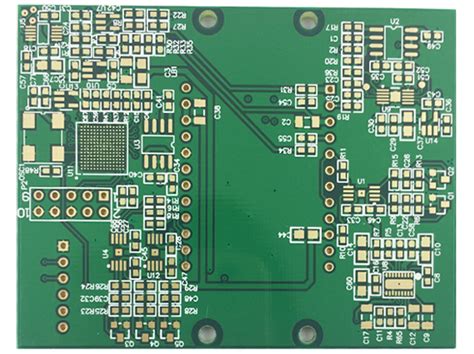
The Role Of China In The Global PCB Assembly Supply Chain
China’s role in the global printed circuit board (PCB) assembly supply chain is both pivotal and expansive, reflecting the country’s broader influence in the electronics manufacturing sector. As the world’s largest producer of PCBs, China has established itself as a central hub for PCB assembly, a process that involves mounting electronic components onto a PCB to create a functional circuit. This dominance is not merely a result of its manufacturing capacity but also due to a combination of strategic factors that have positioned China as an indispensable player in this industry.
To begin with, China’s vast manufacturing infrastructure provides a significant advantage.
The country boasts numerous state-of-the-art facilities equipped with advanced technology and machinery, enabling high-volume production with remarkable efficiency. This infrastructure is supported by a well-established supply chain network that ensures the seamless procurement of raw materials and components, which are crucial for PCB assembly. Consequently, manufacturers in China can offer competitive pricing, which is a critical factor for companies looking to optimize costs in their production processes.
Moreover, China’s skilled workforce plays a crucial role in maintaining its leadership in PCB assembly.
The country has invested heavily in education and training programs to develop a pool of highly skilled technicians and engineers. This investment has resulted in a workforce that is not only proficient in the technical aspects of PCB assembly but also adaptable to the rapidly evolving demands of the electronics industry. The availability of such a workforce allows Chinese manufacturers to maintain high standards of quality and precision, which are essential for the production of reliable electronic products.
In addition to these factors, China’s commitment to innovation and technological advancement has further solidified its position in the global PCB assembly supply chain.
The country is home to numerous research and development centers that focus on improving manufacturing processes and developing new technologies. This emphasis on innovation has led to the adoption of cutting-edge techniques such as surface mount technology (SMT) and automated optical inspection (AOI), which enhance the efficiency and accuracy of PCB assembly. By staying at the forefront of technological advancements, China continues to attract international companies seeking to leverage these innovations for their products.
Furthermore, China’s strategic trade policies and government support have facilitated its dominance in the PCB assembly sector.
The Chinese government has implemented various initiatives to promote the electronics industry, including tax incentives, subsidies, and favorable trade agreements. These policies have encouraged both domestic and foreign investment in the sector, fostering an environment conducive to growth and development. As a result, China has become an attractive destination for companies looking to outsource their PCB assembly needs.
However, it is important to acknowledge the challenges that China faces in maintaining its leadership in the global PCB assembly supply chain.
Rising labor costs, increasing environmental regulations, and geopolitical tensions pose potential risks to the country’s manufacturing sector. Nevertheless, China’s ability to adapt to these challenges and its continued focus on innovation and quality assurance suggest that it will remain a key player in the industry for the foreseeable future.
In conclusion, China’s role in the global PCB assembly supply chain is characterized by its extensive manufacturing capabilities, skilled workforce, commitment to innovation, and supportive government policies. These factors have collectively enabled China to become a dominant force in the industry, providing essential services to electronics manufacturers worldwide. As the demand for electronic products continues to grow, China’s influence in the PCB assembly sector is likely to persist, underscoring its significance in the global supply chain.
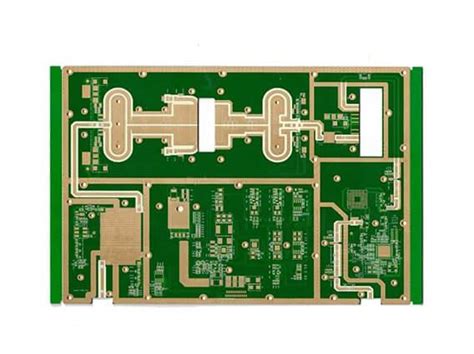
Quality Assurance Practices In China PCB Assembly
In the realm of electronics manufacturing, China has emerged as a global leader, particularly in the field of printed circuit board (PCB) assembly. The country’s dominance in this sector can be attributed to its robust quality assurance practices, which ensure that the products meet international standards and customer expectations. Quality assurance in China PCB assembly is a multifaceted process that involves meticulous planning, rigorous testing, and continuous improvement.
To begin with, the foundation of quality assurance in China PCB assembly lies in the meticulous selection of raw materials.
Manufacturers prioritize sourcing high-quality components from reputable suppliers, ensuring that each part meets the necessary specifications. This initial step is crucial, as the quality of the raw materials directly impacts the performance and reliability of the final product. Furthermore, manufacturers often establish long-term partnerships with their suppliers, fostering a collaborative environment that emphasizes quality and consistency.
Once the raw materials are secured, the focus shifts to the assembly process itself.
Chinese manufacturers employ advanced technologies and state-of-the-art equipment to assemble PCBs with precision and efficiency. Automated assembly lines, equipped with surface mount technology (SMT) and through-hole technology (THT), are commonly used to enhance accuracy and reduce human error. These technologies not only streamline the assembly process but also contribute to maintaining high-quality standards.
In addition to leveraging cutting-edge technology, Chinese PCB manufacturers implement stringent quality control measures throughout the assembly process.
This includes in-process inspections, where each stage of production is carefully monitored to identify and rectify any potential issues. By conducting these inspections, manufacturers can ensure that defects are detected early, minimizing the risk of faulty products reaching the market.
Moreover, comprehensive testing is a cornerstone of quality assurance in China PCB assembly.
Manufacturers employ a variety of testing methods, such as automated optical inspection (AOI), in-circuit testing (ICT), and functional testing, to verify the performance and reliability of the assembled PCBs. These tests are designed to identify any defects or deviations from the specified parameters, allowing manufacturers to address them promptly. By incorporating multiple testing stages, manufacturers can guarantee that the final product meets the highest quality standards.
Furthermore, continuous improvement is a key aspect of quality assurance in China PCB assembly.
Manufacturers are committed to refining their processes and adopting best practices to enhance product quality. This commitment is often reflected in their adherence to international quality management standards, such as ISO 9001 and IPC standards. By aligning with these standards, Chinese manufacturers demonstrate their dedication to maintaining consistent quality and meeting the evolving needs of their customers.
In conclusion, quality assurance practices in China PCB assembly are comprehensive and multifaceted, encompassing everything from the selection of raw materials to the implementation of advanced technologies and rigorous testing. These practices are instrumental in ensuring that Chinese manufacturers produce high-quality PCBs that meet international standards. As the global demand for electronic products continues to grow, China’s commitment to quality assurance will undoubtedly play a pivotal role in maintaining its leadership position in the PCB assembly industry. Through continuous improvement and adherence to stringent quality standards, China remains at the forefront of delivering reliable and high-performance PCBs to the global market.

Cost-Effective Strategies For Outsourcing PCB Assembly To China
Outsourcing printed circuit board (PCB) assembly to China has become an increasingly popular strategy for companies seeking to optimize their production processes while minimizing costs. This approach leverages China’s well-established manufacturing infrastructure, skilled labor force, and competitive pricing, making it an attractive option for businesses worldwide. However, to fully capitalize on these advantages, it is essential to adopt cost-effective strategies that ensure quality and efficiency throughout the outsourcing process.
To begin with, selecting the right partner is crucial. Companies should conduct thorough research to identify reputable Chinese PCB assembly providers with a proven track record of delivering high-quality products.
This involves evaluating potential partners based on their certifications, such as ISO 9001 and IPC standards, which indicate adherence to international quality management and manufacturing practices. Additionally, seeking recommendations from industry peers and reviewing customer testimonials can provide valuable insights into a supplier’s reliability and performance.
Once a suitable partner is identified, clear communication becomes paramount.
Establishing open lines of communication helps to bridge any cultural or language barriers that may arise. This can be achieved by designating a dedicated project manager who is fluent in both English and Mandarin, ensuring that all technical specifications, timelines, and expectations are clearly understood by both parties. Regular video conferences and progress reports can further facilitate transparency and alignment throughout the project.
Moreover, it is important to consider the design for manufacturability (DFM) principles during the initial stages of product development.
Collaborating with the Chinese PCB assembly provider early in the design process can lead to significant cost savings. By incorporating DFM principles, companies can optimize their designs to reduce complexity, minimize material waste, and streamline assembly processes. This proactive approach not only lowers production costs but also enhances product quality and reliability.
In addition to DFM, leveraging economies of scale can further drive down costs.
By consolidating orders and increasing production volumes, companies can negotiate better pricing with their Chinese partners. This strategy is particularly effective for businesses with high-volume production needs, as it allows them to benefit from bulk purchasing discounts and more efficient use of manufacturing resources. However, it is essential to balance order size with inventory management to avoid overproduction and excess stock.
Furthermore, companies should be mindful of logistics and supply chain considerations.
Shipping costs and lead times can significantly impact the overall cost-effectiveness of outsourcing PCB assembly to China. To mitigate these challenges, businesses can explore various shipping options, such as sea freight for cost savings or air freight for faster delivery. Additionally, working with a logistics partner experienced in international trade can help navigate customs regulations and ensure timely delivery of components and finished products.
Finally, maintaining a focus on quality control is vital to the success of outsourcing PCB assembly to China.
Implementing rigorous quality assurance processes, such as in-line inspections and final product testing, can help identify and rectify defects early in the production cycle. Collaborating with the Chinese partner to establish mutually agreed-upon quality standards and performance metrics ensures that the final product meets the desired specifications and customer expectations.
In conclusion, outsourcing PCB assembly to China offers numerous cost-saving opportunities for companies willing to adopt strategic approaches.
By carefully selecting partners, fostering clear communication, incorporating DFM principles, leveraging economies of scale, optimizing logistics, and prioritizing quality control, businesses can effectively harness the benefits of China’s manufacturing capabilities while maintaining high standards of quality and efficiency.



